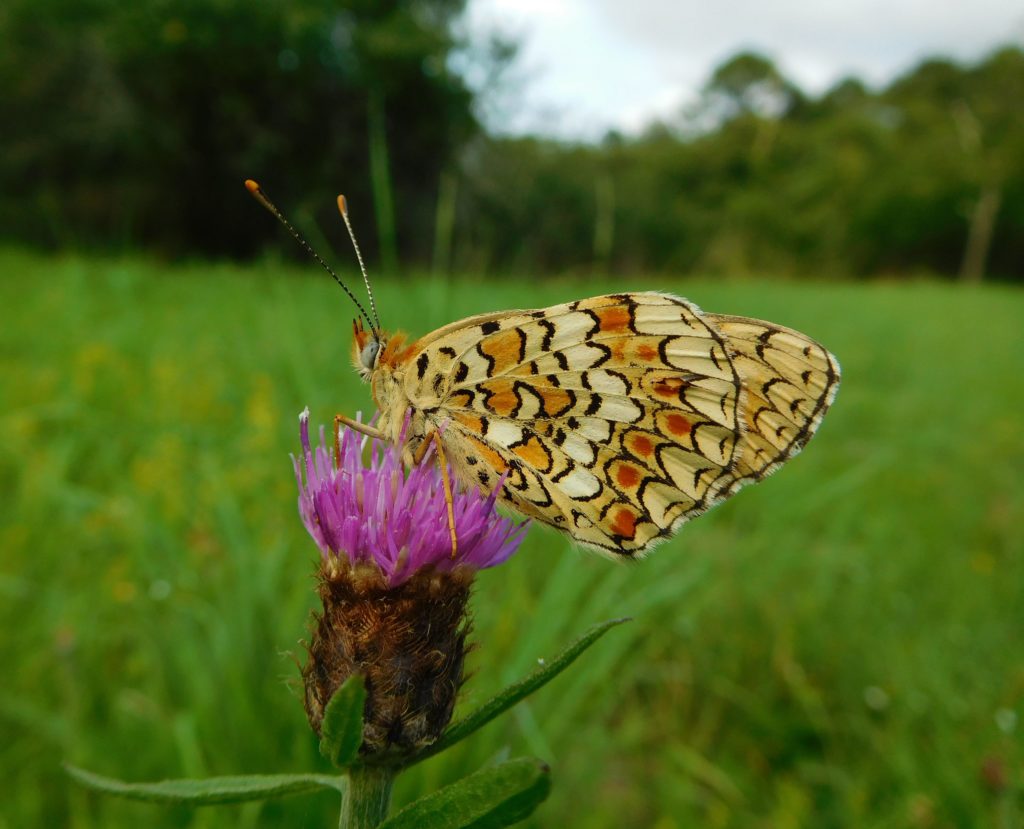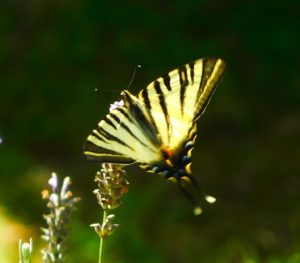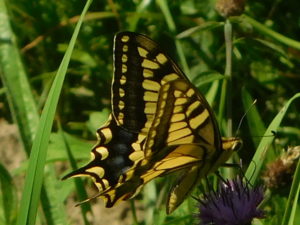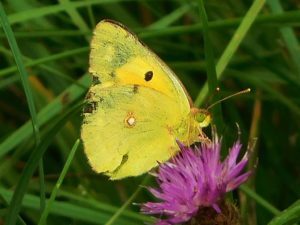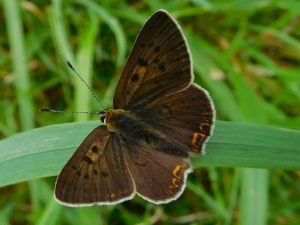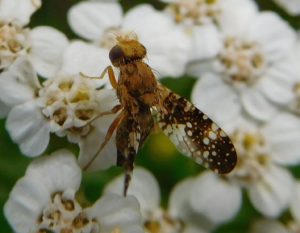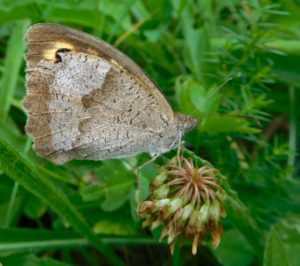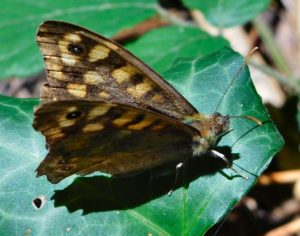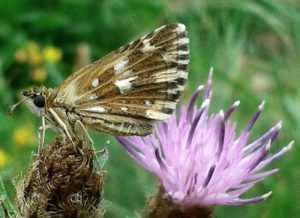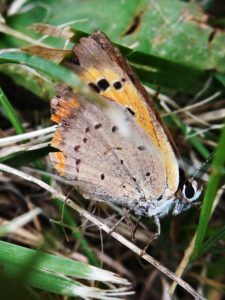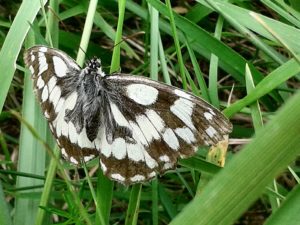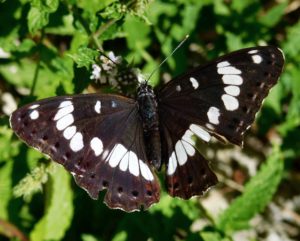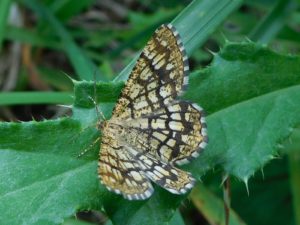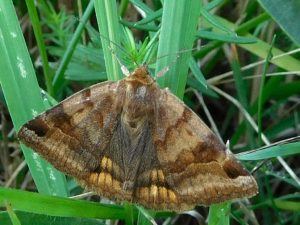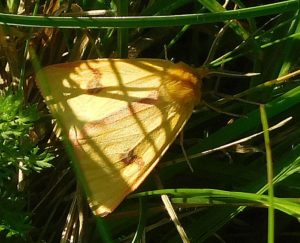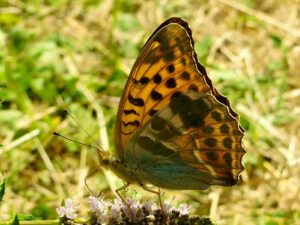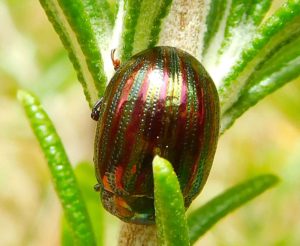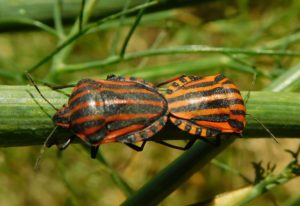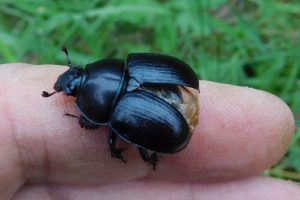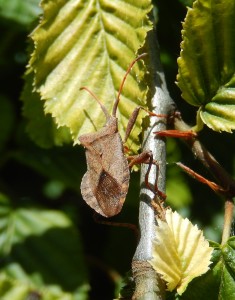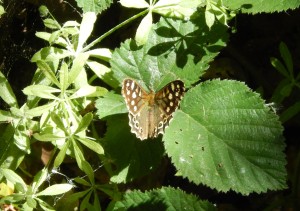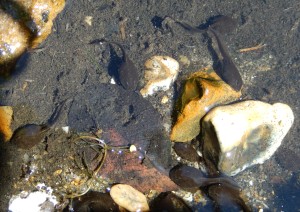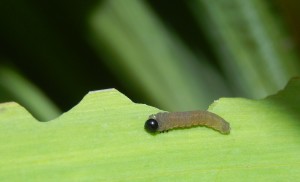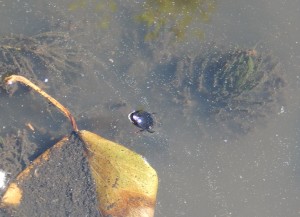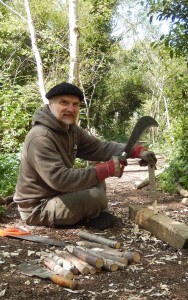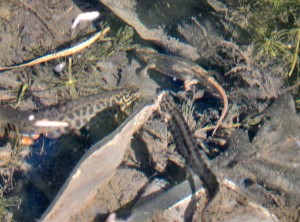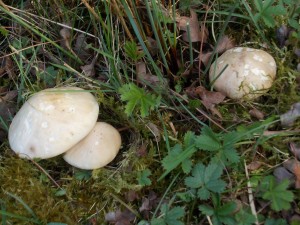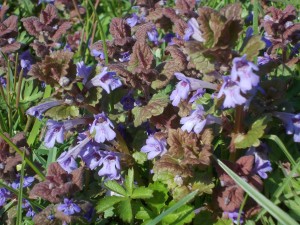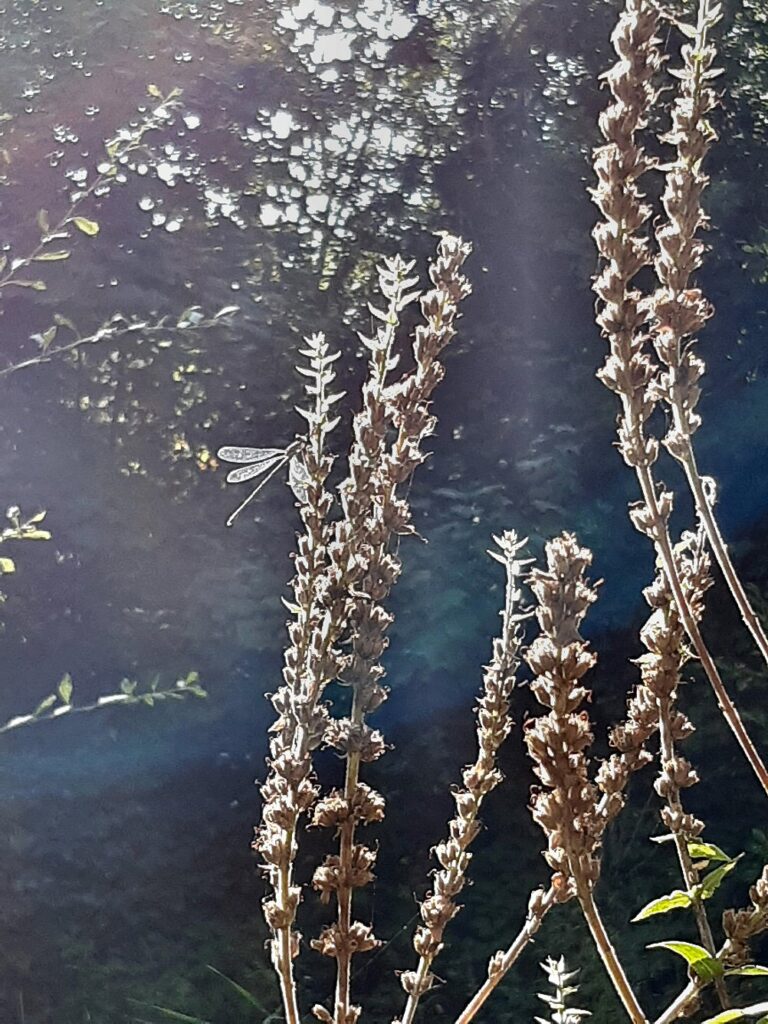
Amidst the returning crisis of Covid and the chaotic responses to it, I felt it was time to go and sit quietly and enjoy a little Nature, just as it was.
A Grey Squirrel looked up from the path below the bench where I was headed, and lolloped off. There were several little holes where it must have been hiding or retrieving nuts in its boom-and-bust economy – surplus one moment when a tree’s fruits ripen all at once, famine when nothing is ripe a while later.
The afternoon was warm and sunny at 24 Celsius, and it was very pleasantly quiet. I sat cross-legged — in half-lotus, halfway to meditation maybe — on the bench by the pond and watched.
A Willow Emerald Damselfly (aka Willow Spreadwing, a good name as it’s one of the few damselflies that perches with its wings open like a dragonfly) came and rested on a dry Purple Loosestrife flower-spike. It had a good viewpoint above the little open water remaining in the pond, and clear air all around. Soon I could see why: it chased off a fly that came close, and returned to its perch: clearly it was a territorial male. A moment later, a rival Willow Emerald flew by, and the two of them dashed and spiralled up and across the pond until the rival gave up and fled. The victor returned to another stalk nearby.
Meanwhile, several Magpies squawked and chattered, actually quite Jay-like in their calls though with more chattering conversation. They kept this up more or less continually.
A Wren hopped about in the Willows on the little island, presumably catching insects, and then whirred, its little tail still cocked, across past my shoulder into the brambles. Some Wren warning-chatter came out of the bramble thicket behind me.
At the top of the Willows on the island, a cloud of non-biting Midges clustered in their cheerful display flight, backlit by the sunshine. Lower down, bees and hoverflies whirred about, apparently finding something sweet worth visiting; perhaps drops of sticky half-dried sap excreted by aphids, as there were no flowers up there.
A Red Admiral Butterfly, an occasional visitor here, flapped gracefully past. A Speckled Wood Butterfly, very territorial, perched on the bench beside me, then angled its wings in three steps closer and closer to the angle of the sun, camouflaging itself by choosing the smallest possible shadow. It’s the same reason soldiers drape nets to stretch away from their equipment, to hide the telltale shadow (as well as to break up any recognisable outline).
Down by the water, something large stirred. A Red Fox slinked silently up the bank, no more than three metres from my seat, and vanished into the Wet Woodland.
I unfolded my legs gently. I suppose half an hour had passed: something interesting had been happening every moment.

